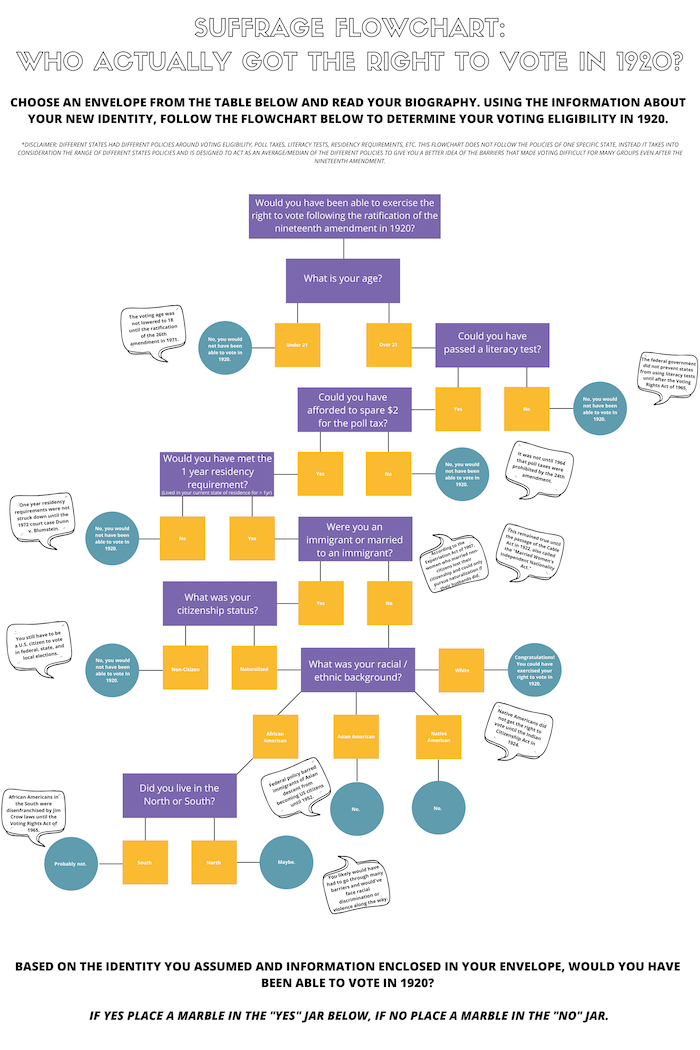
Maggie Loft
Directed by Dr. Christin Hancock
Our project “White to Vote: Racism and Xenophobia during and after the Woman Suffrage Movement” is aimed at exploring the discrimination of women of color and immigrant women from the suffrage movement. We wanted to examine the ways that white women “traded” on their whiteness to gain the vote, or in other words how they capitalized on their racial similarity with white men and took advantage of anti-immigrant and racist political rhetoric to push their cause forward. We also wanted to emphasize that 2020 is only the centennial of white women’s suffrage - African American, Asian American, Native American, and immigrant women did not gain this right until, in many cases, decades later. We also wanted to look at the suffrage associations that were formed by women of color. We found that it was very difficult to find primary sources from these groups and women of color in leadership roles but we did find references to many suffrage associations headed by African American and Asian American women, especially right here in Oregon. This project was designed to have two parts. The first part is an interactive flowchart activity in which you are assigned one of ten biographies giving you the identity of a woman alive in the 1920s. Using her biographical information you can go through the flowchart to see whether or not you would have be able to exercise the right to vote in 1920. The second part is a discussion activity modeled after the “Kitchen Conversations” portion of the Tenement Museum in New York City. There are three discussion prompts that include some background information and a primary source excerpt for context. Our goal with this project was to bring to light that many women did not have the privilege of exercising the right to vote after the nineteenth amendment and that many groups still struggle with gaining full access to this right even today. We also wanted to encourage open discussion around this topic between people who may not have otherwise gotten the chance to interact.






